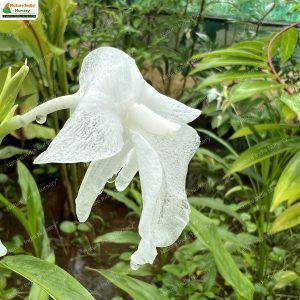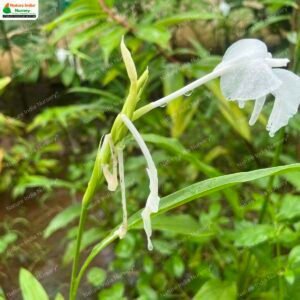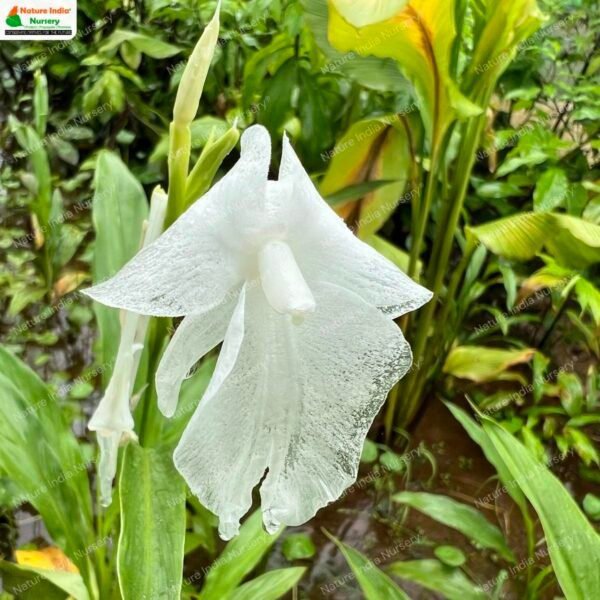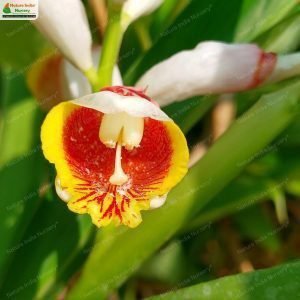Curcuma scaposa, commonly referred to as Scalloped Turmeric, is a perennial herbaceous plant native to the tropical regions of Southeast Asia. Known for its scalloped, green leaves and striking flower spikes, this plant adds ornamental value to gardens and landscapes. The flowers, typically bright yellow to orange, emerge from tuberous rhizomes and bloom in clusters.
Habitat
This species thrives in warm, humid climates, often found in understory habitats of tropical forests. It prefers well-drained, rich soils and is typically seen at elevations of 500 to 1,500 meters, where there is ample rainfall.
Planting and Care
- Light: Prefers partial shade to full shade.
- Soil: Well-draining, fertile soil with plenty of organic matter.
- Watering: Keep the soil consistently moist, especially during the growing season, but avoid waterlogging.
- Maintenance: Mulching helps retain moisture and suppress weeds; periodic fertilization can enhance growth.
Additional Information
- The rhizomes of Scalloped Turmeric are sometimes used in traditional medicine, although they are less common than other turmeric species.
- Propagation is typically done through rhizome division, best performed during the rainy season.
- This plant is sensitive to cold and frost, requiring protection in cooler climates.
Please note: Scalloped Turmeric is not commonly cultivated for culinary use but is valued for its ornamental beauty.











